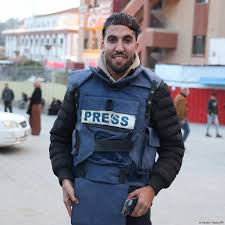Tucker Carlson, Candace Owens and Nick Fuentes are, blessedly, like contentious crustaceans brawling in a bucket. To read what I mean, please click here.


Tucker Carlson, Candace Owens and Nick Fuentes are, blessedly, like contentious crustaceans brawling in a bucket. To read what I mean, please click here.

Dear Visitor,
I have started offering weekly writing on the online publishing platform Substack. What I post there are either ruminations that have not been published (or are unpublishable!) elsewhere, some oldies but goodies (at least in my estimation) articles and short thoughts on current events. There is no charge for subscribing.
To subscribe to receive the offerings, just go to https://substack.com/@rabbiavishafran
and click on the “free” option. There is no need to upgrade to a paying plan (though any funds generated will go to help marbitzei Torah — like funds generated by the “Donate” button here). All of what I post will be accessible to all subscribers.

It might not be known to many of us, but in the years before WWII, antisemitism of the vilest sort was a prominent part of the American scene.
According to David S. Wyman and Rafael Medoff, in their book “A Race Against Death,” a series of national public opinion polls gauging American attitudes between 1938 and 1946 showed that between one third and one half of the U.S. population saw Jews as greedy and dishonest, and that “Jews had too much power” in the country. Some 15 percent of Americans supported “a widespread campaign against the Jews in this country” and another 20 percent sympathized with such a campaign.
Then there was the infamous German-American Bund, which, on February 20, 1939, some six months before Nazi Germany invaded Poland and just as Hitler was completing construction of his sixth concentration camp, held a packed rally at Madison Square Garden, where more than 20,000 right hands shot forth in the Nazi salute as an American flag passed by. Held aloft were posters with slogans like “Stop Jewish Domination of Christian America.”
Speeches at the rally referred to “job-taking Jewish refugees.” Flags borne by attendees were waved in approval. When an unarmed young Jewish man rushed onstage to protest, he was viciously beaten by attendees before police took him away.
Perhaps most famous of all of the Jew-haters of the time was the Catholic priest Father Charles E. Coughlin. His weekly broadcasts garnered an estimated quarter of the U.S. population at the time. His periodical, “Social Justice,” even printed weekly installments from “Protocols of the Elders of Zion.”
“Yonder comes Father Coughlin wearing the silver chain,” sang folk singer Woody Guthrie, “cash on his stomach and Hitler on the brain.”
Coughlin’s vitriol was so objectionable that he was censured by the hierarchy of the Catholic Church, and the federal government barred his publication “because it mirrored the Axis propoganda line.”
Although he was Canadian-born, by 1926, Coughlin had settled in Detroit, on the order of his superior and avid supporter Bishop Michael J. Gallagher. There he established a parish in the Detroit suburb of Royal Oak, known as the Shrine of the Little Flower. It was from that edifice that he broadcast his views.
In a 1938 speech, he threatened that “When we get through with the Jews of America, they’ll think the treatment they received in Germany was nothing.”
When, on December 5, 1938, Coughlin plagiarized a 1935 speech by Nazi Propaganda Minister Paul Joseph Goebbels, quipsters were quick to refer to Coughlin’s church as “the Shrine of the Little Führer.”
Coughlin died in 1979. He is buried in a Catholic cemetery in Southfield, Michigan.
Southfield is well-known to me. My wife and I have visited the city, and its adjacent city Oak Park, several times. West Bloomfield is another adjacent locale. Two of our dear daughters and their wonderful mishpachos live in that “Greater Detroit” area.
It is a vibrantly Jewish area. Shuls, large and small, abound. There are several kollelim for full time learning including the Kollel Institute of Greater Detroit and Yeshiva Beis Yehuda Kollel.
The city has a respected Vaad HaRabbonim and it operates the local beis din and a kashrus hashgacha division.
There are a number of mosdei chinuch in the area, including the renowned Yeshiva Gedolah of Greater Detroit. There is also Yeshiva Beth Yehudah and its affiliated Bais Yaakov, Yeshiva Darchei Torah, Mesivta of West Bloomfield, the recently opened Yeshivas Ohel Torah-Detroit and others.
And, of course, there is a kosher supermarket and bakeries and eateries. Not to mention Judaica stores and clothing stores aimed at frum clientele. In short, the Orthodox community in “Detroit” (although Southfield, West Bloomfield and Oak Park are really independent cities) is dynamic, strong and growing.
Not far down the road in Southfield lie Coughlin’s bones. Musing on that fact during our most recent visit, I had to smile, imagining what the reverend would have to say about the neighborhood he once called home.
(C) 2025 Ami Magazine

Many are the masks worn by murderers in Gaza. But the easiest one to don is that of a reporter. It requires no vetting or vehicle or uniform, only the word “PRESS” placed on a vest.
To read more about that, please click here.

Almost nine out of every ten UN trucks that entered Gaza with aid under the UN’s watch of late were looted before reaching their distribution destinations.
One person who has successfully gotten aid to civilians has been rewarded with… death threats. Read why here.

Some interesting information about how the New York Times’ Gaza sausage is made was presented recently by Semafor, a news website founded in 2022 by Ben Smith, a former media columnist at the Times, and Justin B. Smith, the former CEO of Bloomberg Media Group.
A piece on the site written by its media editor Max Tani disclosed that the Times had originally wanted to run images of Youssef Matar, a young child in Gaza with cerebral palsy, alongside its July 24 story that cited doctors in Gaza finding that “an increasing number of their patients are suffering and dying – from starvation.” While the child may, sadly, have been malnourished (ultimately, Hamas’ fault – and its intention, since Gazans’ suffering does wonders for its p.r.), his shocking physical state was mainly due to the ravages of his disease.
Responsibly, though, the report notes, the Times’ topmost editors wanted to err on the side of caution. According to communications viewed by Semafor, they worried that running the photos might call into question the paper’s reporting (smart guys!). Especially since the article claimed that many of the children suffering from hunger had been healthy kids, without preexisting diseases.
According to internal messages obtained by Semafor, the paper’s managing editor Marc Lacey expressed his concern. “Do we want to use a photo,” he asked “that will be the subject of debate when there is presumably no shortage of images of children who were not malnourished before the war and currently are?”
Sagely, executive editor Joe Kahn agreed, writing that “The story isn’t framed around people with special needs and the lead art[icle] really should not do that, either.”
And so they wisely opted not to publish Youssef’s photos. Instead, they ran, as noted last week in this space, those of Mohammed Zakaria al-Mutawaq, an 18-month-old child in Gaza, whose tiny, emaciated body was the perfect accompaniment to the news story. At least, that’s what the editors thought.
Problem was, of course, that Mohammed was also suffering from serious diseases, cerebral palsy and a suspected genetic disorder, a fact that, when publicized and called to the Times’s attention, was shared in an “Editor’s Note” (posted to the original story, not on the paper’s main social media account) four days after the article appeared and the photo of the “born healthy” child had been widely and irresponsibly republished by other media.
So, let’s recap, just to be clear: The head honchos at the “paper of record” recognized how journalistically irresponsible it would have been to accompany an article saying that healthy Gazan children were being reduced to skeletal shadows of their former selves with a photo of a child with a serious medical condition, the main cause of his sad state. And then went ahead and did precisely that, choosing a different child with a serious medical condition.
As the saying goes, you can’t make this stuff up.
If Mr. Lacey, as quoted above, is correct in his contention that “there is presumably no shortage of images of children who were not malnourished before the war and currently are,” it’s odd that no other clearly malnourished, wasting away young people have had their photographs plastered on his paper’s front page. Could it be that there may indeed be such a shortage?
I don’t know. There is certainly great need in Gaza, and Israel and the U.S. are taking serious steps to ensure that aid to residents isn’t intercepted by Hamas and criminal gangs.
What I do know is that there was a strong desire on 8th Avenue to publish some photo of an ostensibly starving child. So strong that the Old Gray Lady tripped on her skirt and fell face-first into an omelet.
As Semafor reported further, “One thing that pro-Israel critics of the Times and some staff at the paper agree on is that there is a large contingent of staff at the paper who are opposed to the war in Gaza, and blame Israel for the crisis.”
It would seem that, at least on the West Side of Manhattan, objectivity, like irony, is dead.
© 2025 Ami Magazine

Elon Musk’s X’s chatbot descended into full antisemite mode recently, a reflection, unfortunately, of where much of society stews today. To read more about the mindless mirror of malevolence, click here.

To the Editor:
In his lengthy lamentation about Israel’s ostensible descent into genocide, Omer Bartov somehow overlooks a most germane distinction between Israel’s war to vanquish an enemy bent on its destruction and murderous campaigns like those that took place in Bosnia, Darfur, Armenia, Rwanda and Cambodia — and certainly the one carried out by Nazi Germany.
How Israel is waging its war against an enemy that has loudly declared its genocidal intentions is rightly open to criticism, and subject, too, to a reasoned defense. But it is a strange sort of “genocide” that can end immediately with the rulers of the attacked region simply laying down their arms, releasing those they kidnapped who are still alive and leaving the scene.
(Rabbi) Avi Shafran
Staten Island

When Claire Shipman was appointed acting president of Columbia University, she pledged her “steadfast commitment to… integrity.”
Her score on that count is the subject of my most recent Ami column, which you can read here.